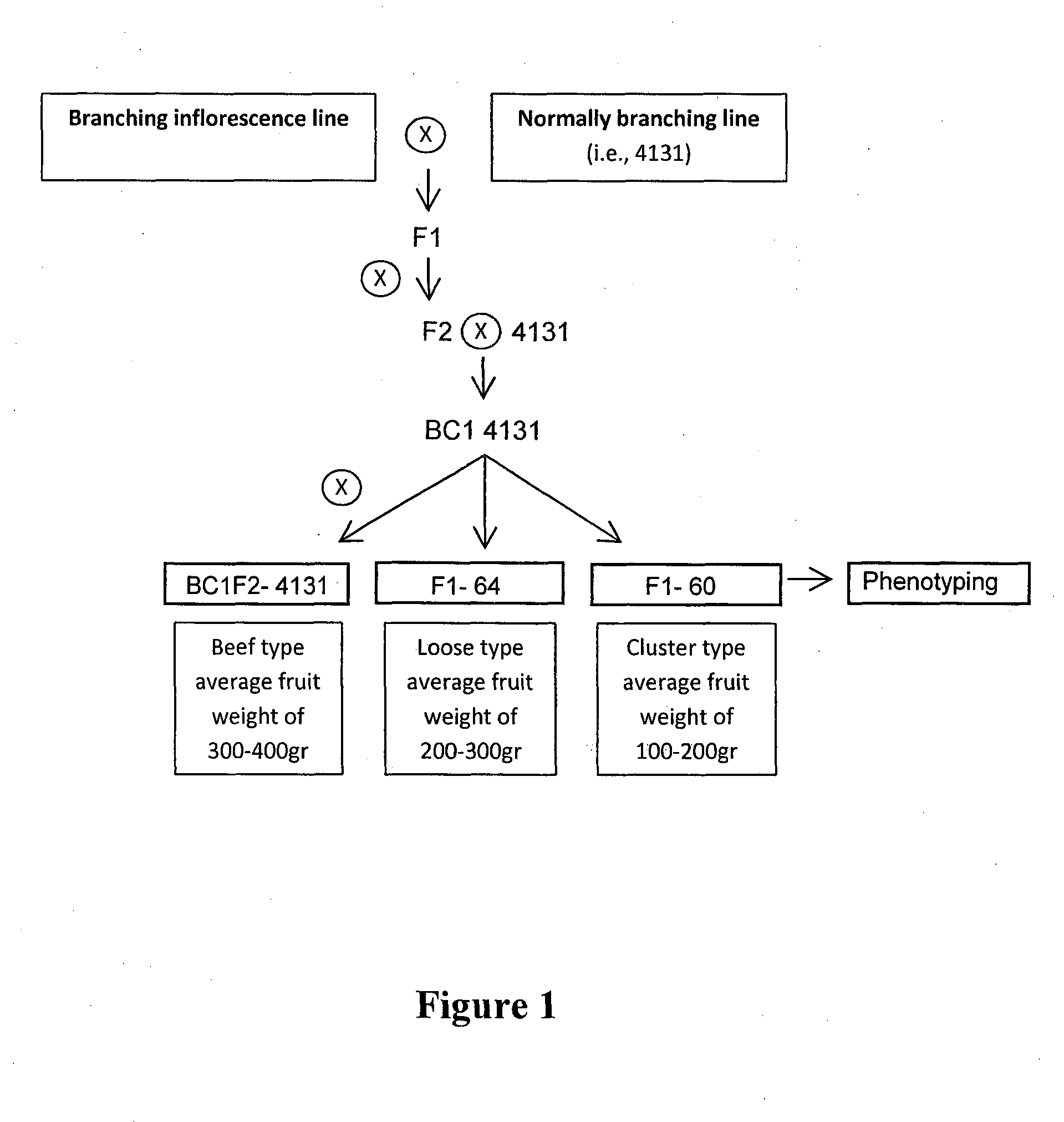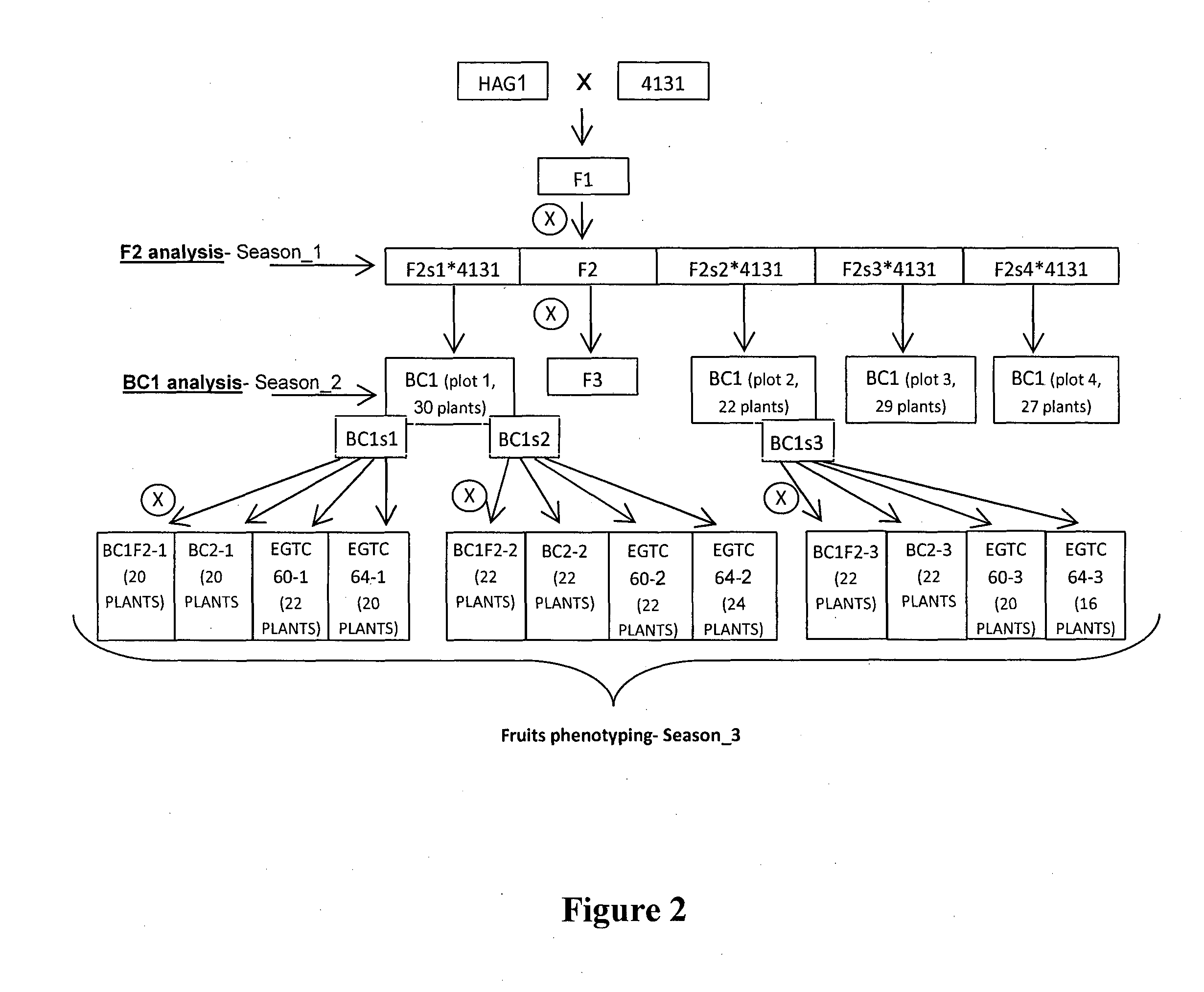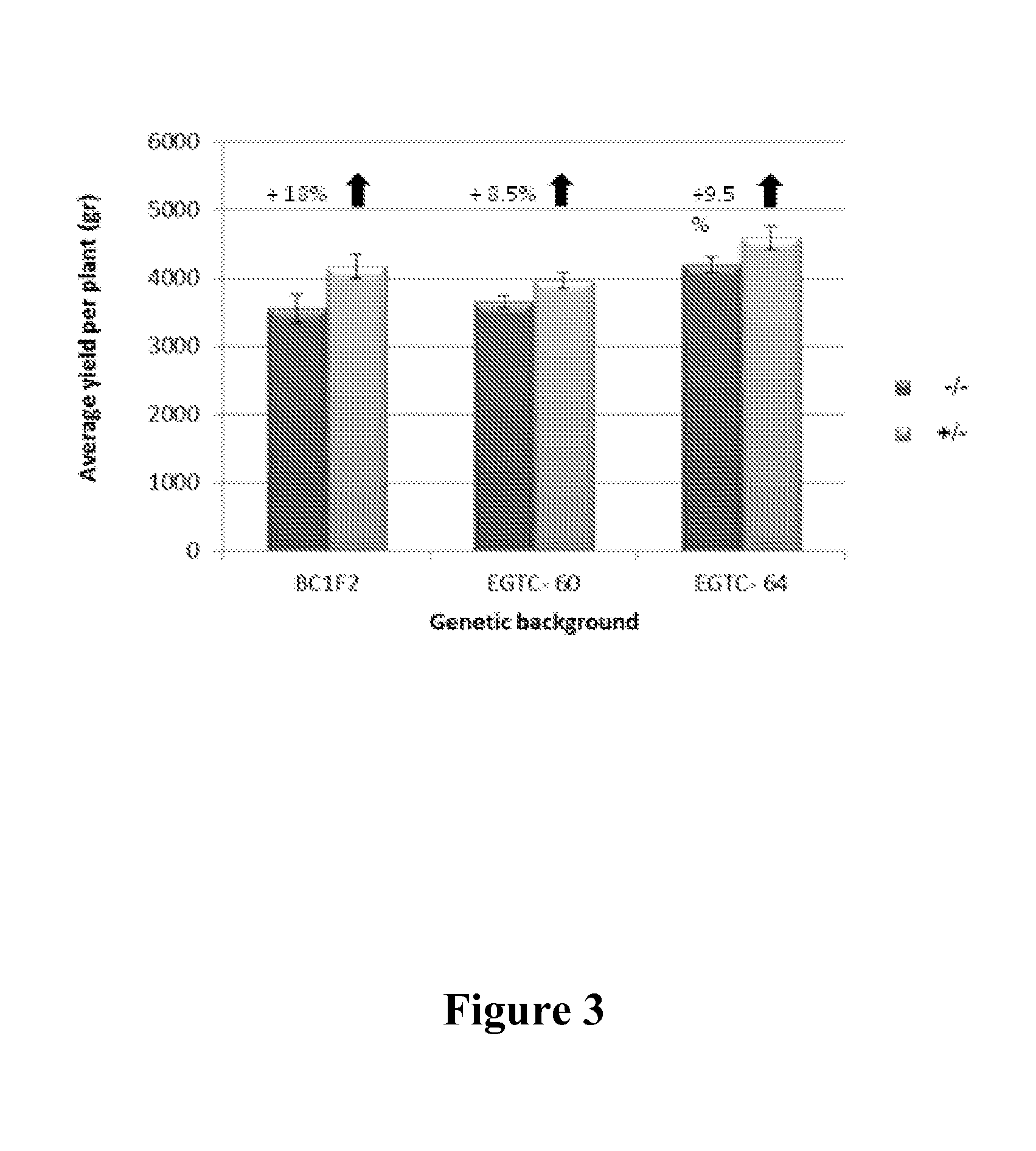High yield tomato plants
a tomato plant, high-yield technology, applied in biochemistry, sugar derivatives, organic chemistry, etc., can solve the problems that the yield properties of cultivated varieties were not disclosed, and achieve the effect of increasing the average fruit weight yield
- Summary
- Abstract
- Description
- Claims
- Application Information
AI Technical Summary
Benefits of technology
Problems solved by technology
Method used
Image
Examples
example 1
Production of Tomato Plants with Unique High Yield Properties
[0309]A source material used for the production of the statistically significant high yield tomato plants of the present invention may include tomato lines and / or accessions with a highly branched inflorescence (i.e. having an average of 50-100 flowers per inflorescence) or a branching inflorescence phenotype (i.e. having an average of at least 10 flowers per inflorescence). An exemplary source material could be tomato line HAG1, seeds of which have been deposited on 11 Apr. 2012, under deposit number NCIMB 41958 according to the Budapest treaty. Alternative exemplary source material could be tomato line 4468, seeds of which have been deposited on 11 Apr. 2012, under deposit number NCIMB 41957 according to the Budapest treaty. Such highly branched or branched inflorescence tomato plant sources or donors could be crossed with any tomato line or tomato plant having a regular or normally branched inflorescence phenotype. Norm...
example 2
Genetic Sources and Progeny Populations Exemplified in the Present Invention
[0321]Reference is now made to Table 2, showing the sources and genetic backgrounds used as examples of potential parental lines and their hybrid progenies. The populations are herein described mainly with respect to their inflorescence and fruit characteristic features according to definitions used within the UPOV guidelines for Tomato Lycopersicon lycopersicum (UPOV TG / 44 / 10 Guidelines for the conduct of tests for Distinctness, Uniformity and Stability).
TABLE 2Lines and progeny populations exemplified in the present inventionLength of internodeinflorescenceFruit: shape in(between 1st and 4thtype of 2ndlongitudinalPlant growth typeinflorescenceand 3rd trussFruit: sizesection(section 2 under(section 5 under(section 16 under(section 22 under(section 24 underUPOV guidelines)UPOV guidelines)UPOV guidelines)UPOV guidelines)UPOV guidelines)LineHAG1indeterminatelongmainlyVery smallpear-shapedmultiparous (50-100 fl...
example 3
Evaluation of Yield Characteristics
Experiment I
[0326]Tomato Hybrids Based on Hag1 Branching Inflorescence Phenotype source
[0327]The plant populations resulted from the pedigrees described in Figures land 2 were evaluated for various phenotypic characteristics, especially yield characteristics including, but not limited to, flower number and fruit number, cluster weight measurements, average fruit weight per plant, average fruit weight per cluster, average individual fruit weight, fruit brix level and fruit earliness. The yield parameters were evaluated at several different genetic backgrounds, examples of which are presented in Table 2, and at the various pedigree generations (see FIG. 2 and Table 2). In each generation or tested population the yield parameters were compared between plants lacking the branching inflorescence trait introgression (− / −) and thus having a regular or normal type inflorescence phenotype (i.e. less than 7 flowers per inflorescence), and plants heterozygous...
PUM
| Property | Measurement | Unit |
|---|---|---|
| Weight | aaaaa | aaaaa |
| Fraction | aaaaa | aaaaa |
| Fraction | aaaaa | aaaaa |
Abstract
Description
Claims
Application Information
 Login to View More
Login to View More - R&D
- Intellectual Property
- Life Sciences
- Materials
- Tech Scout
- Unparalleled Data Quality
- Higher Quality Content
- 60% Fewer Hallucinations
Browse by: Latest US Patents, China's latest patents, Technical Efficacy Thesaurus, Application Domain, Technology Topic, Popular Technical Reports.
© 2025 PatSnap. All rights reserved.Legal|Privacy policy|Modern Slavery Act Transparency Statement|Sitemap|About US| Contact US: help@patsnap.com



